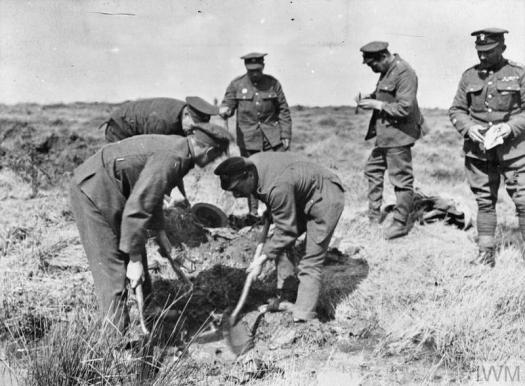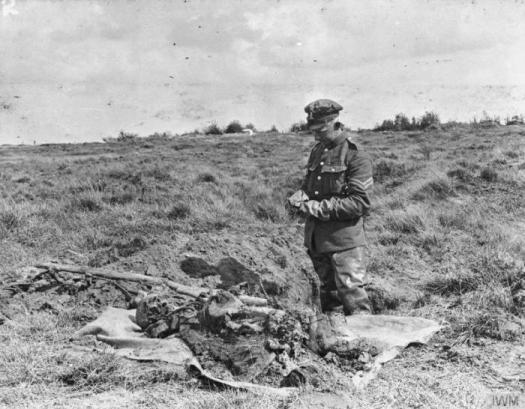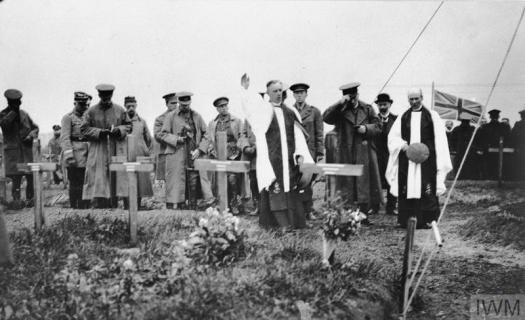, August 25, 2018-
Clearing the dead. A seldom discussed part of war is the military clearance of the battlefield and burial of those who died in combat. According to author Peter Hodgkinson, during and in the years following World War I, the successes of those efforts resulted in cemeteries that became memorial grounds on the Western and other fronts of the war. Clearing the battlefields wasn’t only driven by military pragmatism. There were also important non-military social and psychological factors involved.

From a military standpoint, identification and burial were matters of accounting and morale. There was also public pressure during and after WWI to ensure recovery, identification and burial. British Reverend E.C. Crosse wrote: “Burials on active service had very great practical importance. In the first place if one had buried a man’s body, one knew for certain that he was dead. Secondly, nothing is more depressing to the living to see unburied dead about them.”

After the Battle of the Somme in France, Fabian Ware, a Lieutenant-Colonel in the British military’s Directorate of Graves Registration & Enquiries, raised his concerns about British military morale and public perception in late June of 1917. “We are on the verge over here of serious trouble about the number of bodies lying out still unburied on the Somme battlefields. The soldiers returning wounded or in leave to England are complaining bitterly about it and the War Office has already received letters on the matter.”
Graves Registration Units became responsible for recording the burial of the dead (and cemeteries), but it was up to the military unit itself to carry out the actual burials of an estimated 9.7-million soldiers who died fighting on both sides of the the Great War.

Clearance and burial were some of the most unpleasant and unpopular tasks of the war. British Private J. McCauley was attached to a burial detail in late 1918. He wrote: “For the first week or two I could scarcely endure the experiences we met with, but I gradually became hardened. Often have I picked up the remains of a fine brave man on a shovel. Just a little heap of bones and maggots to be carried to the common burial place. Numerous bodies were found lying submerged in the water in shell holes and mine craters; bodies that seemed quite whole, but which became like huge masses of white, slimy chalk when we handled them.”

The United States military also had a Graves Registration Service. On August 7, War Department Order 104 authorized the organization of a U.S. Graves Registration Service (GRS). The first GRS units reached France in October 1917. General John J. Pershing, commander of the American Expeditionary Forces in Europe demanded particular attention be paid to recovering, identifying and providing proper burials for the roughly 543,000 Americans who died combat related deaths in WWI. Watch the video below for more details.
Sources: “Clearing the Dead” by Peter Hodgkinson,WWI Resource Centre., National Archives and Records Administration, Imperial War Museum, Painted Rock Productions, LLC
